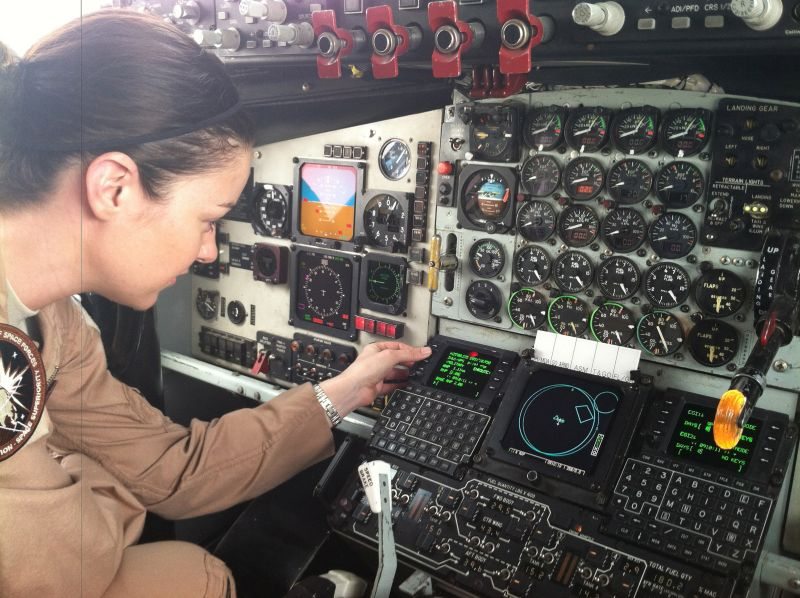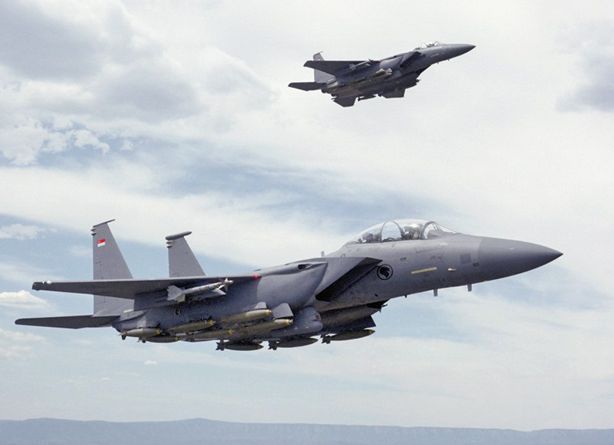More and more people are realizing the game-changing force space capabilities provide in today’s operations, as was the case more than 60 years ago when the air domain added a new dimension to land and sea operations.
The power of that integration was recently seen first-hand by crews of the KC-135 Stratotanker force in Southwest Asia, thanks to Capt. Tracy Lloyd, a deployed member of the director of space forces team.
Charged with conducting protected military satellite communications with the 4th Space Operations Squadron at her home station of Schriever Air Force Base, she deployed as the theater space integrator for Col. Clint Crosier, the director of space forces. In this capacity, she worked to more effectively integrate space effects into overall theater operations; the majority of her time was focused on increased integration of GPS into deliberate planning.
“I learned during the deployment that, according to Air Mobility Command guidance, the KC-135 crews were restricted from using the Precise Positioning Service, or the encrypted, more precise GPS service in certain conditions and during certain phases of flight,” Lloyd said. “That didn’t seem like we were fully leveraging the GPS capability the way it was intended, so I began a ‘science project’ with the 340th Expeditionary Air Refueling Squadron assistant director of operations, Maj. (Lawrence) Osiecki.”
Lloyd began researching the KC-135 navigation systems through technical orders and Air Force Tactics, Techniques and Procedures 3-1 and quickly became an expert in how the GPS system works onboard. She and Osiecki then began a series of tests on the jet to load and zeroize keys to fully document the operation of the navigation system across all of its possible configurations. They observed how the KC-135’s systems responded with and without keys and came to the conclusion that the current guidance was outdated based on recent system upgrades. Armed with this knowledge, Lloyd set out to engage with AMC and the director of mobility forces to explore rescinding the guidance.
“Our research and observations showed that there were no operational grounds for not using the encrypted GPS signal across all phases of flight,” Lloyd said. “I coordinated with AMC and the (director of mobility forces) and they believed in what we were trying to do. Armed with the desire to rescind the guidance, they began to champion the cause with us.”
With their support, Lloyd and the team were successful in rescinding the guidance just five days before she redeployed, affecting an operational policy change that improved the navigational capability of the entire KC-135 fleet worldwide.
“My goal was to have guidance rescinded before I returned home; I didn’t want to leave it for the next person,” she said.
“Captain Lloyd was a great asset to our team,” Crosier said. “Not only did she see the big picture of how space integrates across all domains, but she had a knack for interacting with others and helping them realize space effects in their realm. Her work on the KC-135 issue affected a global policy change — how many captains have that kind of impact?”
Lloyd also led a special project for Lt. Gen. David Goldfein, the commander of Air Forces Central Command, to optimize how GPS effects were planned and integrated into other components’ deliberate planning efforts. Through her work, she developed a key partnership with the Joint Navigation Warfare Center that led to ground-breaking new procedures the JNWC has now implemented as their global standard for all joint planning.
The project also led her to brief Lt. Gen. Vince Brooks, the commander of Army Forces Central Command, and Vice Adm. Mark Fox, the commander of Naval Forces Central Command, which led both ARCENT and NVCENT to implement new procedures as a result of her work.
“The results of this project were really amazing” Crosier said. “Captain Lloyd’s work with the JNWC team took the integration and deliberate planning of GPS effects to the most robust level in CENTCOM history. Tracy ended up being coined by the AFCENT commander, ARCENT commander and NAVCENT commander for her work. Tracy could be the first captain anywhere in CENTCOM, and certainly the first space officer, to get coined by all three service three-stars in a single deployment — that’s a real testament to the value our senior leaders place on the need for effective space integration.”
Before deploying, Lloyd conducted some research with her predecessor.
“He recommended I learn as much as I could on GPS,” Lloyd recalled.
Her squadron commander supported pre-deployment training to meet up with Crosier at the JNWC and get a head start on the project she would lead in theater. She also worked with Capt. Bryony Veater, the weapons officer at the 2nd Space Operations Squadron, to learn more about operations and products. In visiting with the JNWC and 2nd SOPS, she created a solid network foundation that helped her navigate issues in theater.
“This was my first deployment, and I could not have asked for anything better,” Lloyd said. “I found it very rewarding to identify issues and set out to solve them and help others realize the continuous process improvement throughout all aspects of the deployed environment. Watching and knowing others are applying their new-found space knowledge and that they will take it with them and share with others compounding the cross functional awareness of space effects.”











